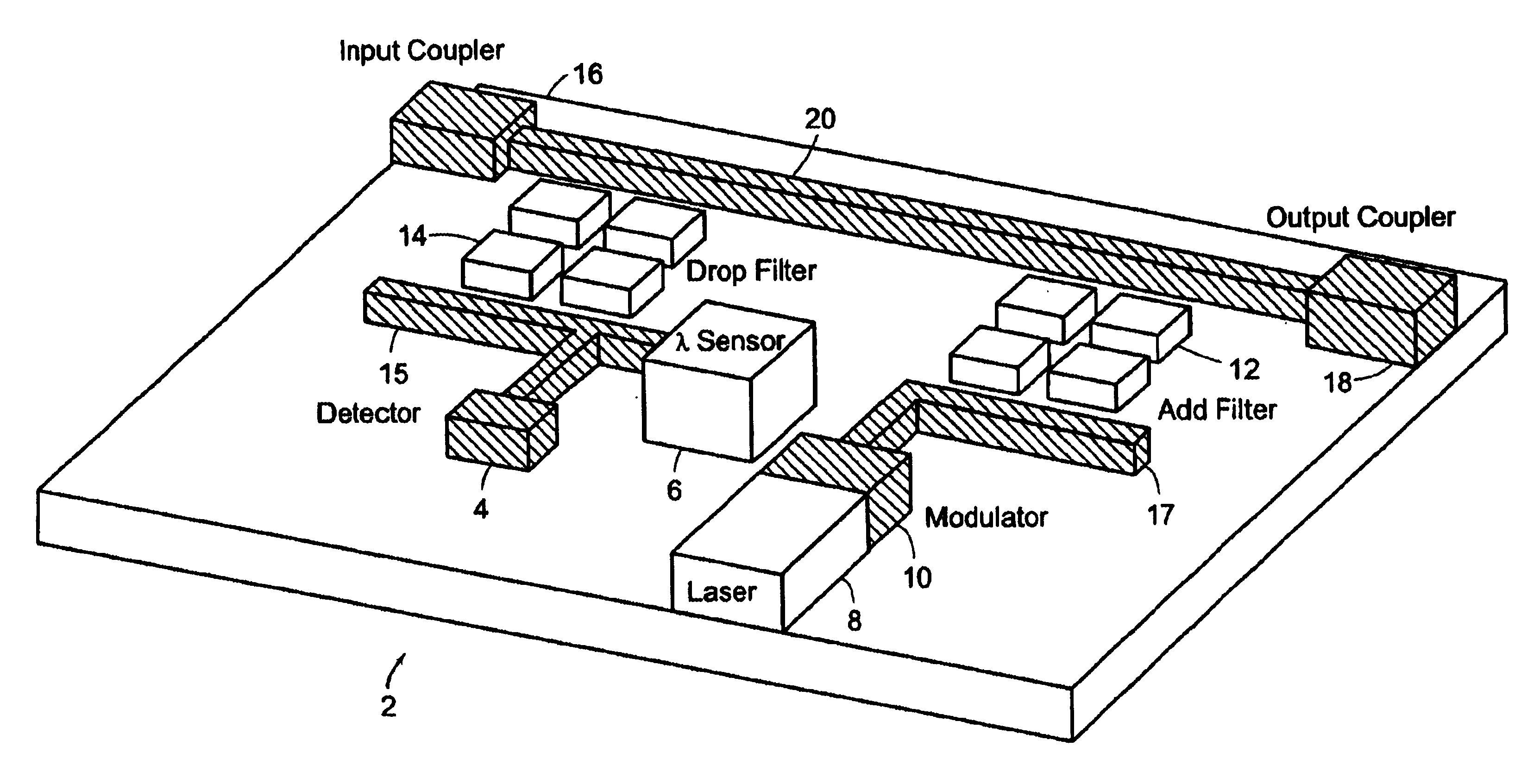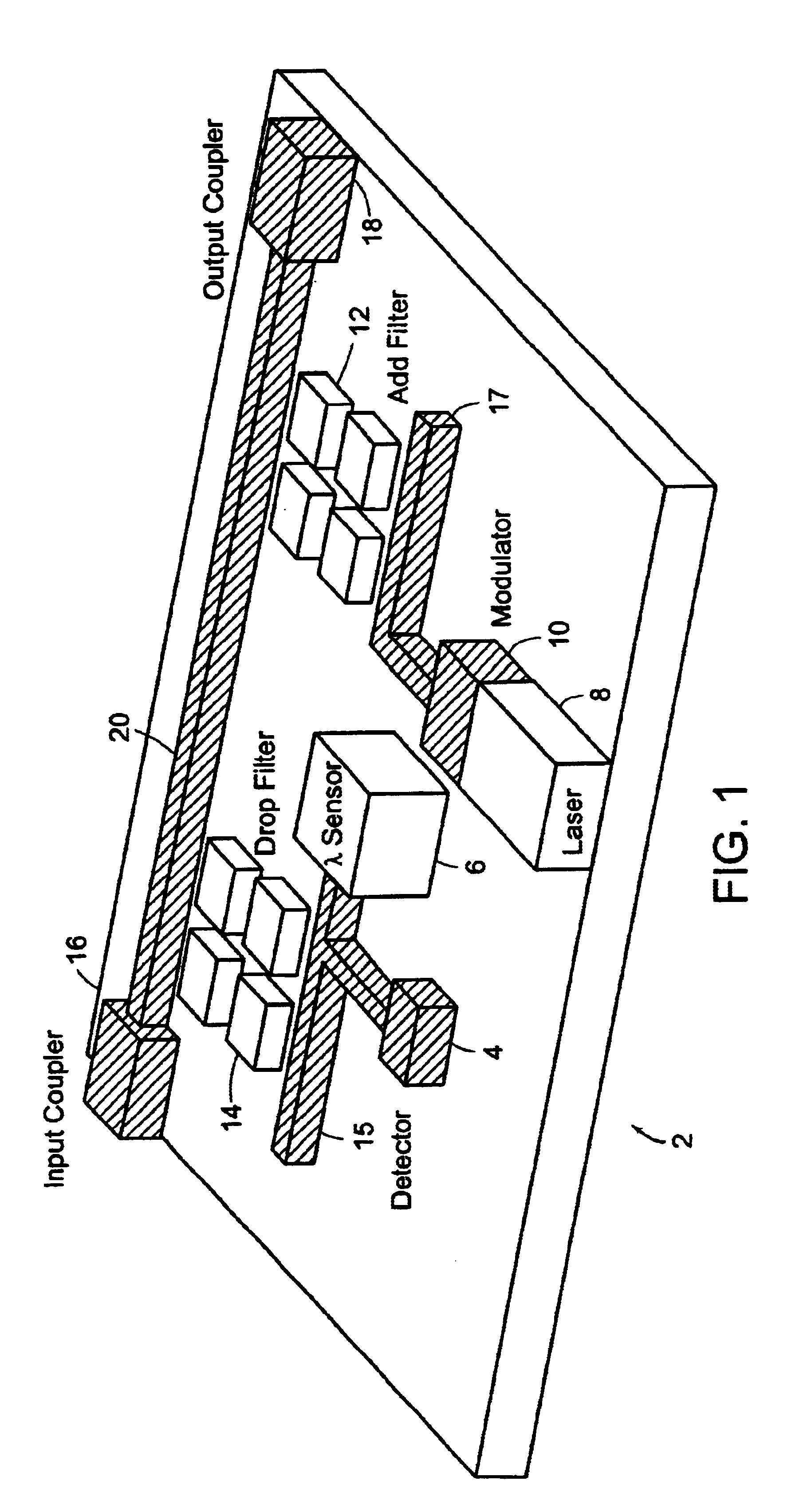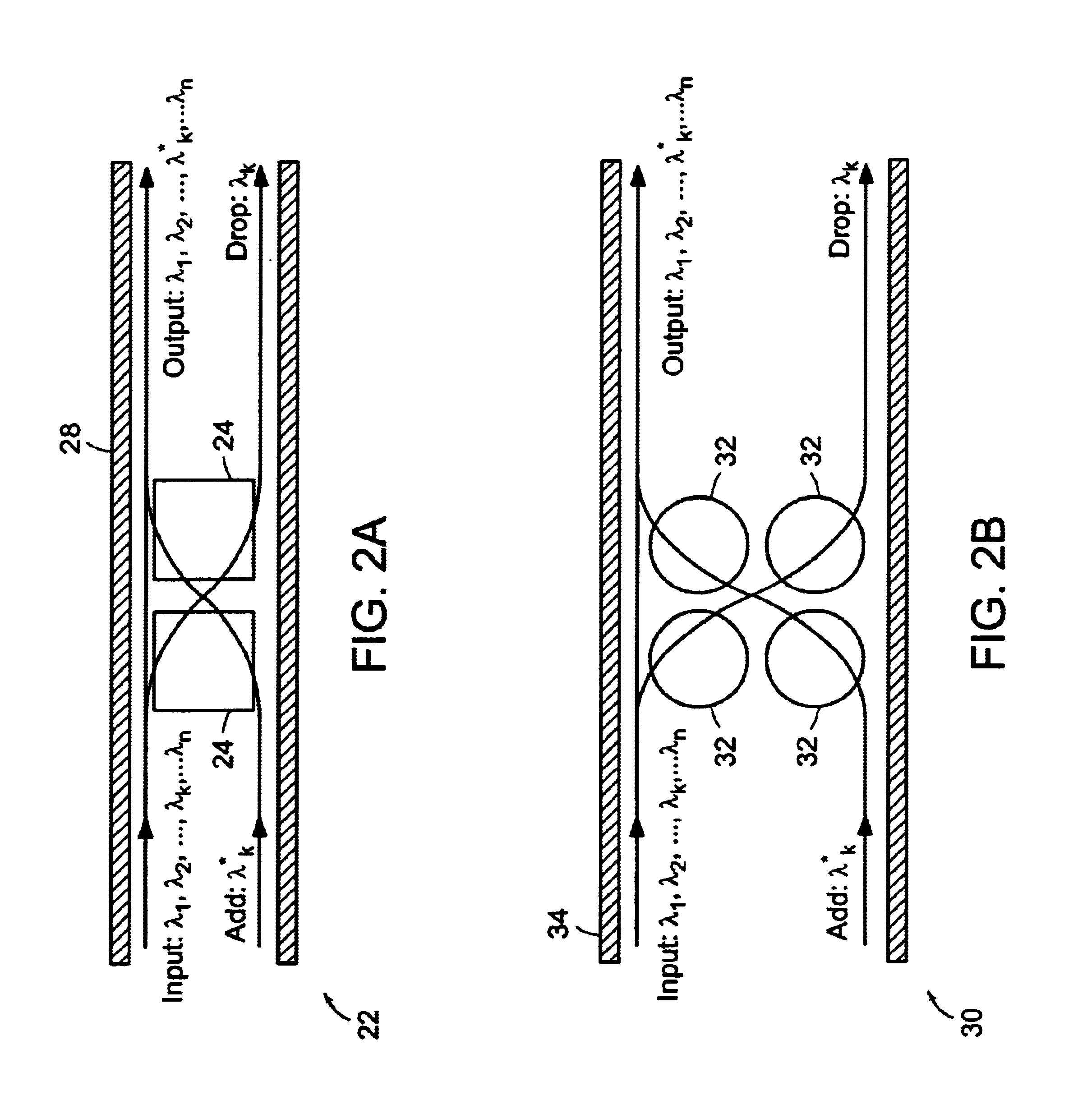Tunable optical add/drop multiplexer with multi-function optical amplifiers
a multi-functional optical amplifier and add/drop technology, applied in the field of integrated photonic circuits, can solve the problems of many photonic functional blocks that are not monolithically integrated together and are discr
- Summary
- Abstract
- Description
- Claims
- Application Information
AI Technical Summary
Problems solved by technology
Method used
Image
Examples
second embodiment
[0042]Since the SOA can amplify or absorb light, the SOA structure can also be used as a modulator. In one embodiment, by modulating the electrical bias on a SOA, the SOA can either absorb light or transmit / amplify light. In a second embodiment, an SOA can be used to modify the phase of the light traveling through one arm of a Mach-Zenhder interferometer. Using the SOA to change the phase of the light by 180 degrees, the light will destructively intefere with the light being transmitted through the other arm of the interferometer. Hence, the intensity of the light being transmitted through the interferometer can be modulated.
[0043]A SOA can be fabricated in two different configurations as shown in FIGS. 4A and 4B. FIG. 4A shows a vertical cavity semiconductor optical amplifier (VCSOA) 42. The VCSOA 42 includes an upper 48 and a lower 52 distributed Bragg reflectors, an active region 50, an upper 46 and a lower 54 cladding layers, and metal contacts 44 and 56. Moreover, the VCSOA 42 ...
third embodiment
[0086]In the invention, the photonic integrated circuit is fabricated on a GaAs substrate using an in-plane SOAs designed to operate at wavelengths near 1300 nm as similarly shown in FIGS. 8A and 8B. Also, the passive waveguide includes a high dielectric constant material, such as GaAs, while the active waveguide includes InGaAsN quantum wells or InAs quantum dots embedded in InGaAs that are cladded with an InGaAsP alloy. Within the waveguides that route the light from one functional block to the next, the passive waveguide is separated from the active waveguide by a layer of oxidized AlAs. The high index contrast between the passive waveguide and adjacent aluminum oxide keeps the light confined within the passive waveguide and prevents its interaction with the active waveguide.
[0087]The SOA of this embodiment includes active and passive waveguides surrounded by cladding material. The cladding material can be composed of an (In, Ga, Al) (As, P) alloy that has a low dielectric consta...
fourth embodiment
[0091]In the invention, the photonic integrated circuit is fabricated on an InP substrate using SOAs designed to operate at wavelengths between approximately 1300 nm and 1600 nm as similarly shown in FIGS. 8A and 8B. The passive waveguide includes a high dielectric material, such as InGaAsP, with a high As content, while the active waveguide includes InGaAsP quantum wells that are cladded with a second InGaAsP alloy. Within the waveguides that route the light from one functional block to the next, the passive waveguide is separated from the active waveguide by the AlAsSb layer. The high index contrast between the passive waveguide and the adjacent AlAsSb layers keeps the light confined within the passive waveguide and prevents its interaction with the active waveguide.
[0092]The SOA of this embodiment includes the active and passive waveguides surrounded by cladding material. The cladding material can be composed of an (In, Ga) (As, P) alloy as a low dielectric material, which surrou...
PUM
 Login to View More
Login to View More Abstract
Description
Claims
Application Information
 Login to View More
Login to View More - R&D
- Intellectual Property
- Life Sciences
- Materials
- Tech Scout
- Unparalleled Data Quality
- Higher Quality Content
- 60% Fewer Hallucinations
Browse by: Latest US Patents, China's latest patents, Technical Efficacy Thesaurus, Application Domain, Technology Topic, Popular Technical Reports.
© 2025 PatSnap. All rights reserved.Legal|Privacy policy|Modern Slavery Act Transparency Statement|Sitemap|About US| Contact US: help@patsnap.com



